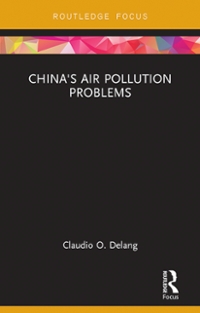Provide solutions to the following attachments.
3. Consider the problem on multiple linear regression in which you have p predictor variables 22(1), . .. ,scu'). The model is given by Y = 50 + 5193(1) + - ' - + pmm + 6 where 5 ~ N(0,02). Suppose that we have 7; random samples of Y, i.e. Y; for i = 1, . . . ,n that satisfy sz=o+61$n+~-+p:rp)+6i with 5,- N N (0, 0'2). Perform the following: (a) Formulate the model above in terms of matrices. Clearly write down the model in matrix form by dening the matrices Y, X , , 6. You can express your answer in terms of realizations of K, 61-. (b) Assuming that 02 is known, write down the minimization problem (in matrix form) that needs to be solved to nd an estimate of i3. (c) Argue that the calculations to nd El are identical to what we did in lecture for simple linear regression. (d) Consequently, write down the least squares estimate of [:3 in matrix form. Also write down its distri bution. EF5400 Advanced International Trade Practice Problem Set 1 1. Consider an economy in which there are two countries, i = 1,2, and a continuum of goods, indexed by ke [0, 1]. Goods are produced using labor: Mi (k ) = 4 (1) / m (k) . where a; (k) is the unit labor requirement for producing good & in country i, y (k) is the output of good & produced in country i and l (k) is the amount of labor used in production. Assume that the unit labor requirement functions are an (k) = call-*) 12 (k) = cox The representative consumer in each country has the utility function [ lage ( R ) LA. This consumer is endowed with 4 units of labor where h = 12 = I. (a) Define an equilibrium of the economy. Calculate expressions for all of the equilibrium prices, p.(k), and quantities, c(k), y:(k), and (k). Draw a graph that illustrates the pattern of specialization in production, consumption, and trade. (b) Suppose now each country imposes an ad valorem tariff ~ on imports from the other country. Repeat the analysis of part (a). (c) For the model in part (b), calculate GDP in each country. 2. Consider an economy in which there is a continuum of goods, s E [0, 09). which are ordered so that higher-indexed goods involve more advanced tech- nologies in the production process. An individual consumer has preferences given by u(c) = e- log (c(s, t ) + 1) ds dt.1. State the OLS estimation criterion and derive the normal equations 2. The estimated linear demand function of D = BO + 8 1 P + 8 2 Y + U is. D = 65.2 - 96P +0.28Y (-3.06) (4.93) (2.1) R =0.903 Where the figures in the parentheses are estimated standard errors, P = price, Y = Income and R is the coefficient of multiple determination. a) Interpret the estimated regression coefficients. b) Is the observed negative relationship between D and P justifiable a priori? c) Are the estimates statistically significant? Explain. d) How would you interpret RZ? 3. Given the data below 40 44 46 48 52 58 60 68 74 IX 6 10 12 14 16 18 22 24 26 32 X2 S 9 17 24 a) Estimate the partial regression coefficients in the model, the standard errors of the slope coefficients and R2. b) Test at the 5% level of significance for (i) , and (ii) B2 c) Construct the 95% confidence interval for (i) 8, and (ii) B2 Construct the ANOVA table Test the overall significance of the model at 5% (use the F-test). 4. From the following data estimate the partial regression coefficients, their standard errors the adjusted and unadjusted R* values. Y = 367.693 X2 = 402.760 XJ = 8.0 E( - 1) = 66042.269 [(X2 -X2)? = 84855.096 [(Xx- X;) =280.000 E(Y - D)(X2 - X2) = 74778.346 E(Y - n)(X> - X,) = 4250.900 [(Xx - X2)(Xx - X;) = 4796.000 1 = 15 5. To examine the hypothesis that government deficits (XI) and inflation (X2) increase interest rates (Y) an econometrician estimated the following regression model using annual data from 1977 to 2017: Y, = 4.25+0.04X1, +0.25X21 (2.14) (0.002) (0.005) R2= 0.98(a) A "unit step" signal u(t) (i.e., a unit-step waveform) is defined by the equation u(t) = 0 for t 0, by x(a, t) = 0 for t










